How to Connect Your AirPods to Any Mac or MacBook
Apple’s AirPods are undoubtedly among the best truly wireless earbuds on the market, especially if you’re immersed in the Apple ecosystem. In fact, Apple achieved a staggering 19 million units sold in just the first quarter of 2022.
Whether you’re at a cafe working or casually enjoying music during tasks, AirPods have become a necessity—unless you prefer the tangling mess of wired earbuds.
In this guide, let’s navigate the process of pairing your Apple Airpods with your Mac device, whether it’s previously paired with your iPhone or if you’re embarking on a fresh start.
Table of Contents
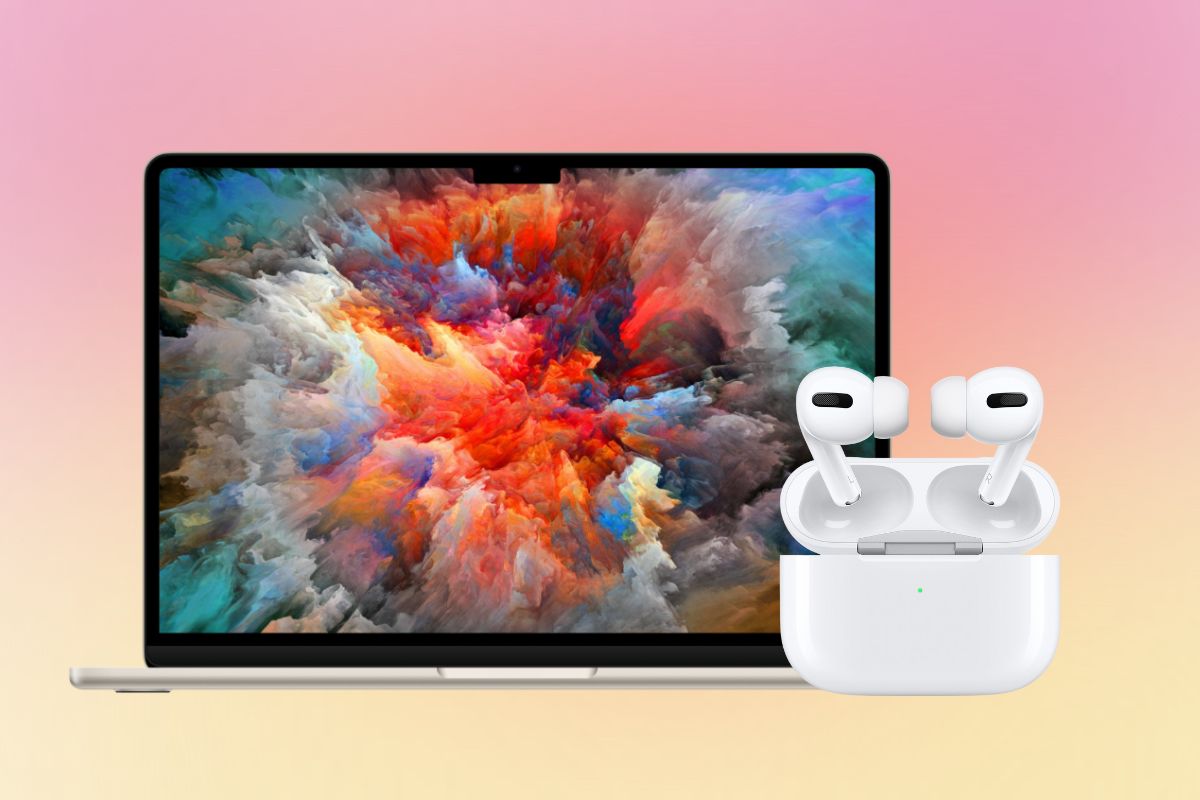
Connecting AirPods to Mac with iPhone Connection
Thanks to the seamless Apple ecosystem, if you have the same iCloud account logged into your iPhone and Mac, and your AirPods are already connected to your iPhone, the process of pairing your AirPods to the Mac becomes much simpler. In fact, it is already paired and just waiting for you to connect.
1. Prepare AirPods:
Place both AirPods in the charging case and keep the charging case’s lid open.
2. Access Volume Settings on Mac:
On your Mac, tap on the Volume icon, which can be found in the menu bar at the top of your screen. Alternatively, if you’re on a newer version of macOS, tap on the Control Center icon, and then click on the > icon near Sound to expand the menu.
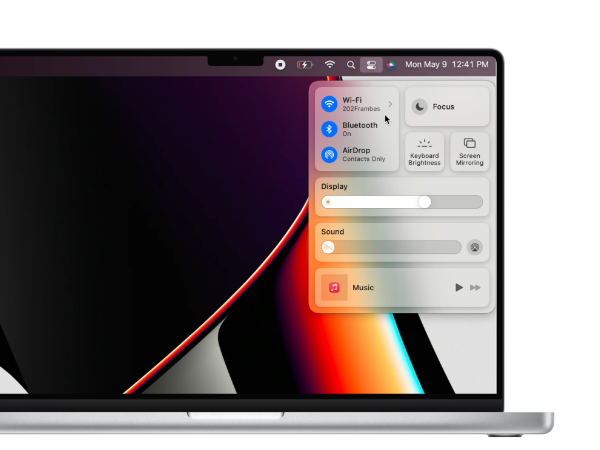
3. Select AirPods as Output Device:
Under the Output Device section of this menu, select your AirPods.
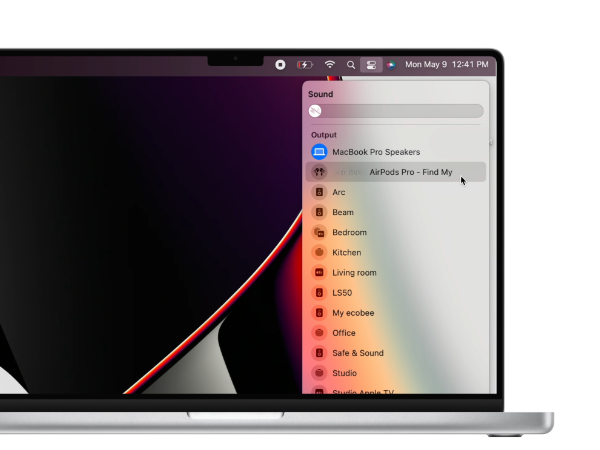
With this, your AirPods are now connected and ready for playback on your MacOS device. Wasn’t that lightning quick?
Connecting AirPods to Mac without iPhone Connection
If your AirPods aren’t previously connected to your iPhone, it will take a couple of extra steps, but it isn’t anything out of the blue. Here’s how you can do it.
1. Prepare AirPods:
Begin by putting back the earbuds in their charging case, keeping the lid open.
2. Activate Pairing Mode:
Press and hold the circular button on the back of the case until the LED status indicator light starts to flash.
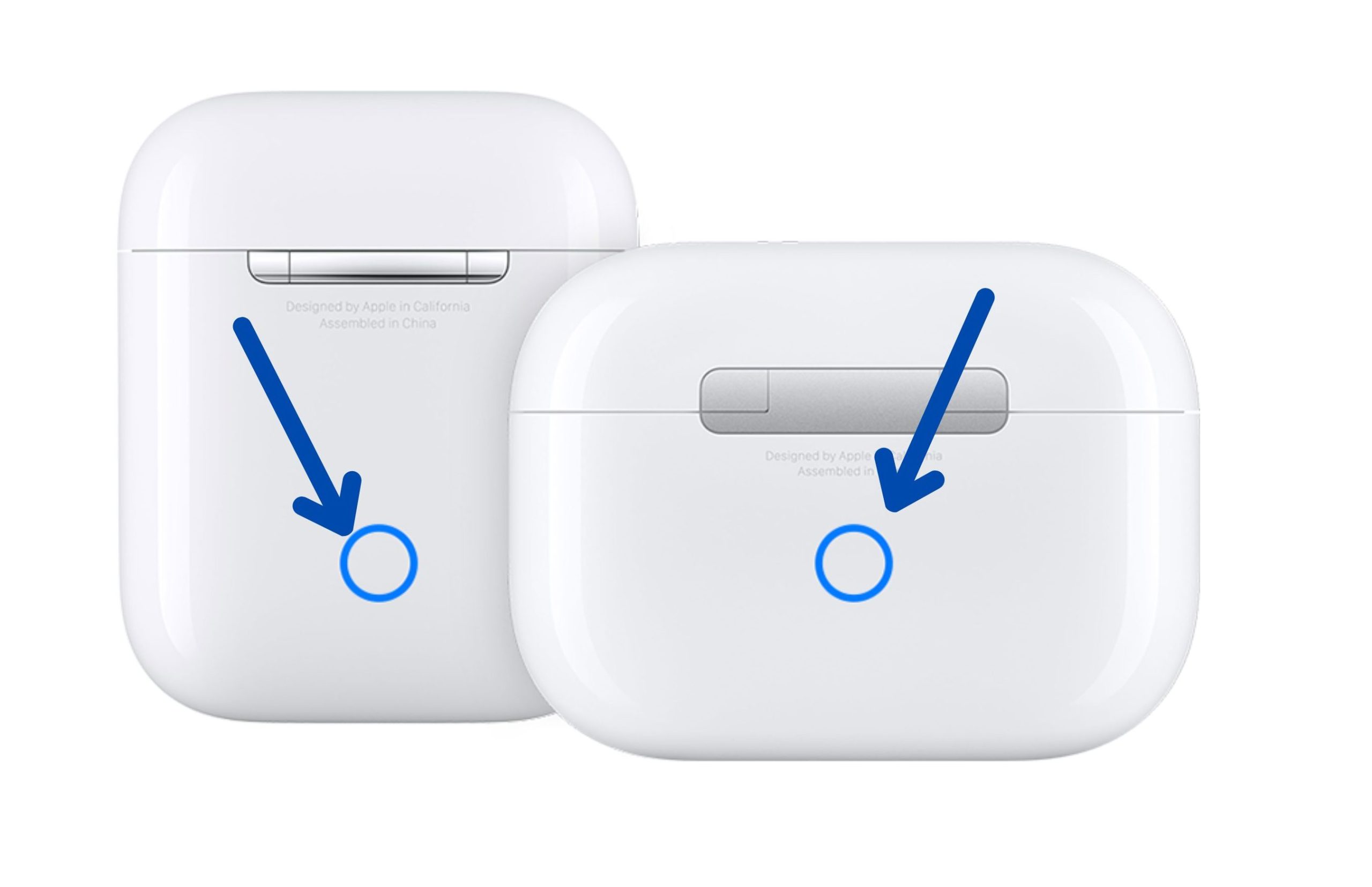
3. Access System Settings on Mac:
On your macOS device, place the cursor on the Apple icon present in the menu bar at the top to open the Apple menu. Click on System Settings.
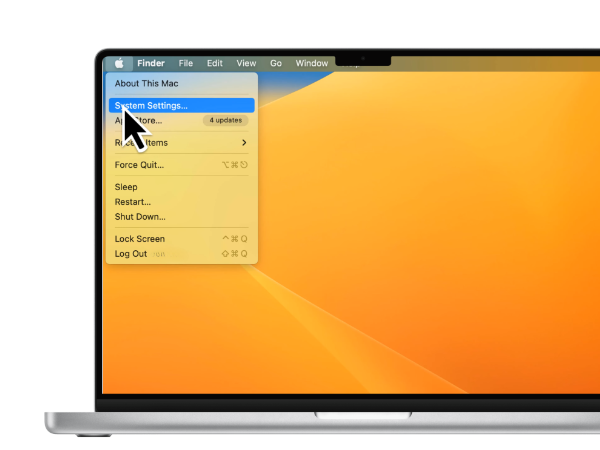
4. Navigate to Bluetooth Settings:
Under the System Settings window, find and select Bluetooth.
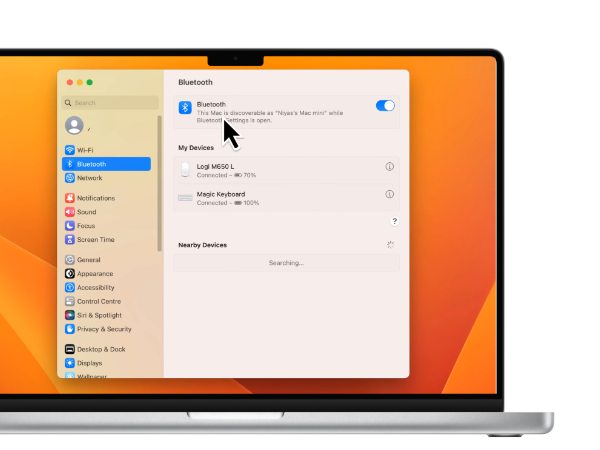
5. Connect AirPods:
In the new window for Bluetooth devices, under the list of Nearby Devices, find the AirPods you want to pair with the Mac and click on Connect.
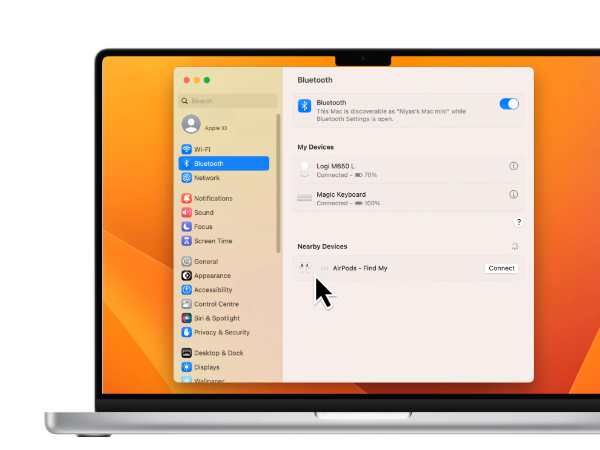
6. Finalize Connection:
Wait for a couple of seconds, and soon, the AirPods will appear at the top of the Devices list, ready to make some noise.
Switching Between Connected Devices with AirPods
To seamlessly switch between connected devices when your AirPods are linked to both your iPhone and Mac, and you prefer your Mac as the audio source, follow these steps. If you already have the Bluetooth icon in the menu bar, you can directly skip to Step 3.
1. Open Bluetooth Settings:
Press the Command + Spacebar keys on your Mac’s keyboard simultaneously to open Spotlight. Search for Bluetooth and hit Enter to select the Bluetooth option that appears.
2. Enable the Bluetooth Icon in the Menu Bar:
On the Bluetooth settings page, check the checkbox that says Show Bluetooth in the menu bar.
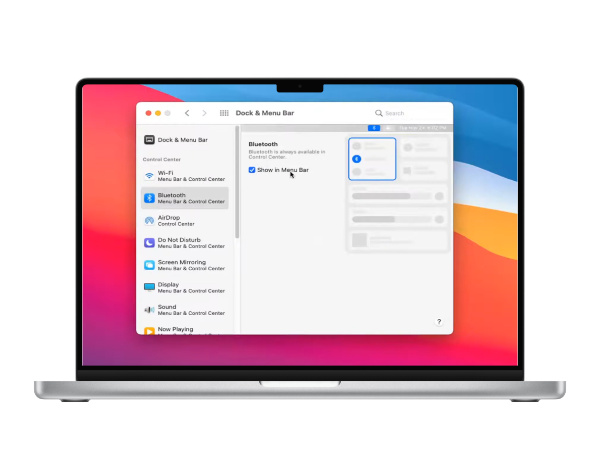
3. Connect AirPods to Mac:
Whenever you want to connect your AirPods to the Mac, simply press the Bluetooth icon at the top-right of your screen in the menu bar. Choose your AirPods from the list, and that’s it.
Switching Audio Output & Input Devices on Your Mac
There might be situations where your AirPods are connected to the Mac, but the machine still plays audio through another device, such as built-in speakers or an external speaker. Here’s how you can choose the audio output and input device on your Mac computer:
1. Access Sound Settings:
Head over to the System Settings and navigate to the Sound submenu.
2. Modify Output or Input:
Under Output & Input, locate the option for Output or Input, depending on whether you’d like to change the audio output device or audio input source. Click on the respective button.
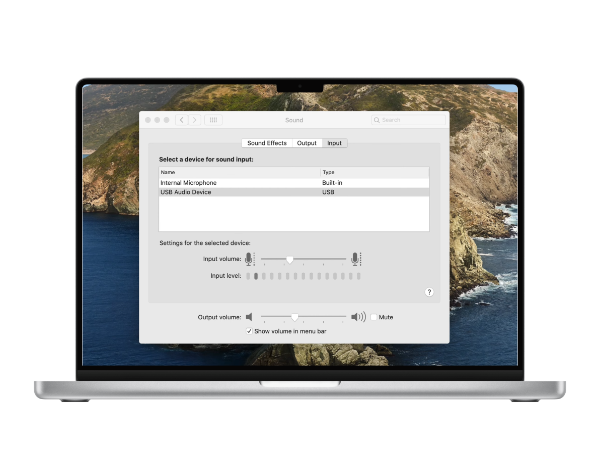
3. Choose Device:
From the list of available devices, select the one you want to use.
Common AirPods Troubleshooting Tips for macOS
If your AirPods won’t connect to your macOS device, here are some troubleshooting steps you can try:
- Check Battery Status: Verify if your AirPods are running low on battery or turned off. If used with another iOS or iPadOS device, check the battery percentage in the Control Centre. If low on charge, place the earbuds back in the case, charge it, and then try connecting again.
- Enable Bluetooth: Ensure Bluetooth is turned on. Click on the Apple icon, go to Settings, and select Bluetooth. Check the Bluetooth status indicator on the left side; turn on Bluetooth if it’s off.
- Restart Your Mac: A simple restart can flush temporary cache files and free up RAM. Restart your Mac to see if it resolves the issue.
- Check for OS Updates: Verify if Apple has released an OS update. Click the Apple logo > System Settings > General > Software Update to check for and install any available updates.
- Unpair and Reconnect: If previous steps don’t work, unpair your AirPods on Mac. Click the Apple logo > System Settings > Bluetooth. Hover over your AirPods device name, choose Disconnect, and then repeat the pairing process.
How to Connect Two AirPods to One Mac
Let’s say you and your friend want to watch a movie on your Mac together. What do you do? You connect both the AirPods to the same Mac. By connecting both sets of AirPods to one single device, you can enjoy the film together without disturbing anyone. Here’s how you can do it:
- Pair both sets of AirPods with your Mac, as outlined in the guide above.
- Open Audio MIDI Setup using Spotlight search on your Mac.
- Tap on the plus (+) icon button in the lower-left corner and select Create Multi-Output Device.
- On this page, choose both sets of AirPods you want to use.
- Finally, navigate to System Settings > Sound > and switch the output to the newly created multi-output device.
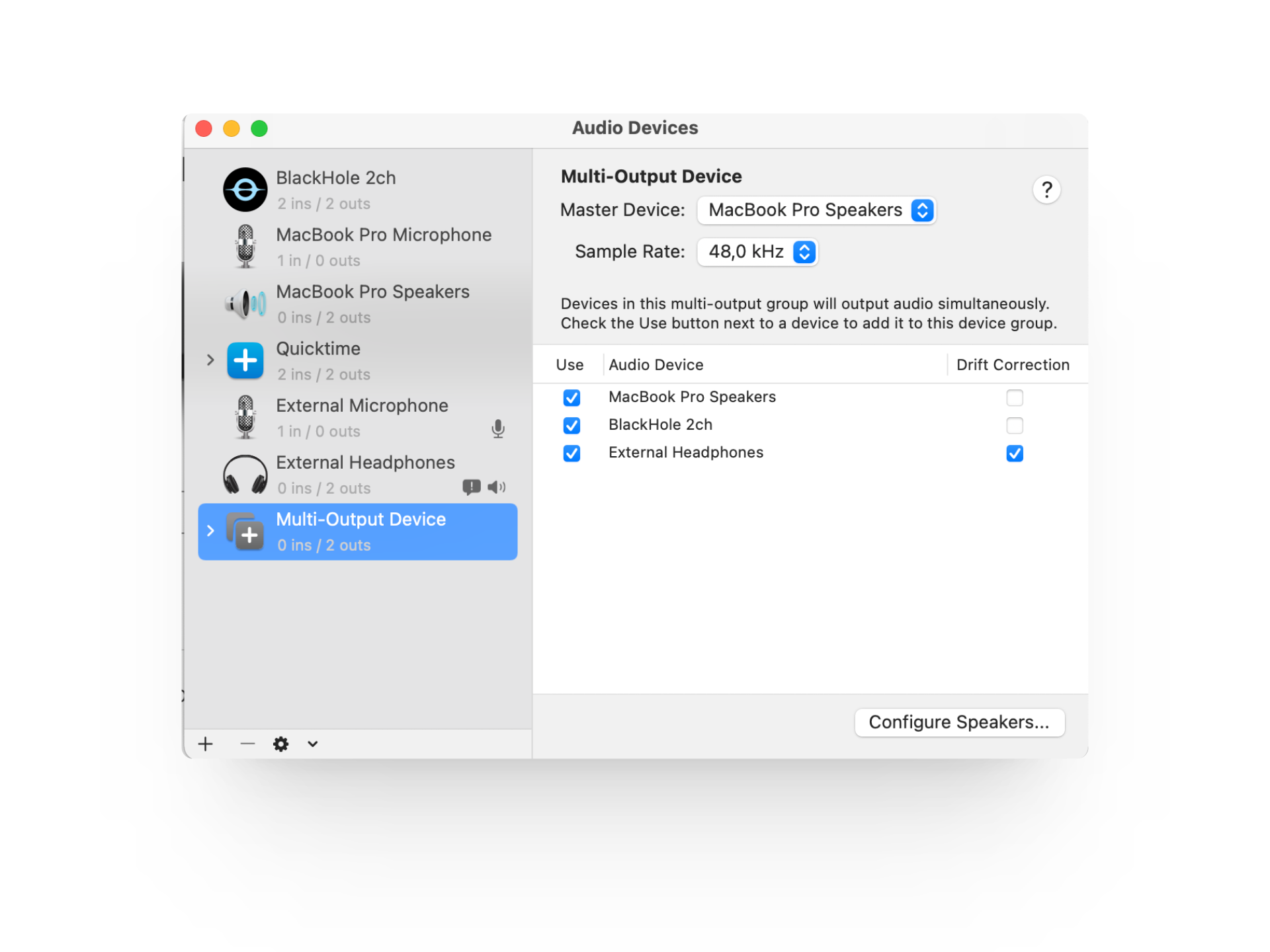
Conclusion
With this, your AirPods should be connected and ready for playback from your Mac. Remember to check the basics, from battery levels to Bluetooth settings. If you have any other questions or encounter any issues, please let us know by leaving a comment below.
FAQs
Resetting your AirPods is fairly simple. Begin by ensuring that both AirPods are in the charging case with the lid open. Next, tap and hold the configuration button at the back of the case for at least 15 seconds, until the light in the case blinks orange; and that’s it.
You don’t need to manually upgrade your AirPods software. Apple ensures that all updates are delivered automatically while your AirPods are charging and in Bluetooth range of your iPhone, iPad, or Mac connected to Wi-Fi.
Yes, you can use AirPods with all your Apple devices as long as they are signed into the same iCloud account. The seamless switching feature allows you to move between devices without having to manually connect them each time.
To check the battery life of your AirPods on your Mac, you can click on the Bluetooth icon in the menu bar at the top of your screen and hover over your AirPods to see the battery percentage. Alternatively, you can open the “Battery” section in the Today View of the Notification Center.
If you experience poor sound quality, ensure your AirPods are clean and free of debris. Also, check the sound settings on your Mac to ensure the output is set correctly. It might help to disconnect and reconnect your AirPods, or to reset them if the issue persists.
 Reviewed by
Reviewed by 




